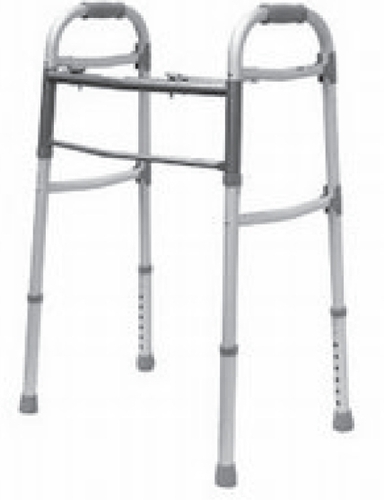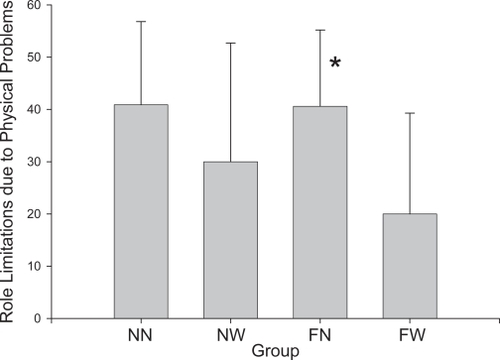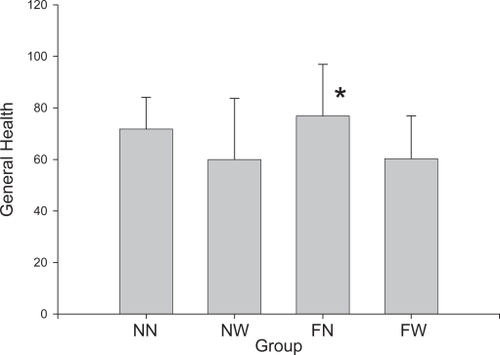Figures & data
Table 1 Subject characteristics
Table 2 Constructs of the SF-36 Health Survey questionnaire (for item numbers see Appendix 1).
Table 3 Mean scores on individual constructs of the SF-36 and the SF-36 total score based on faller status and walker use
Figure 2 Results of ANCOVA comparing walker users to nonusers on the physical functioning (PF), role limitations due to physical problems (RLPP), and general health (GH) constructs, as well as the total SF-36 score (TSF-36).
Abbreviations: ANCOVA, analysis of covariance.
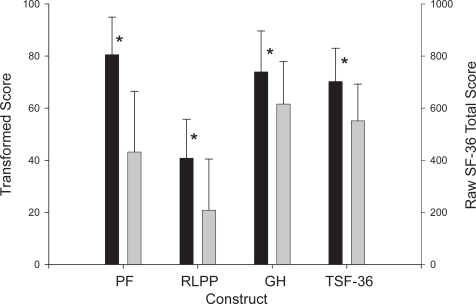
Table 4 Multiple comparisons using LSD test
Figure 3 Data for the four comparison groups on the physical functioning construct.
Figure 6 Data for the four comparison groups on the total SF-36 score.
Abbreviations: FN, faller–no walker; FW, faller–walker; NN, nonfaller–no walker; NW, nonfaller–walker.
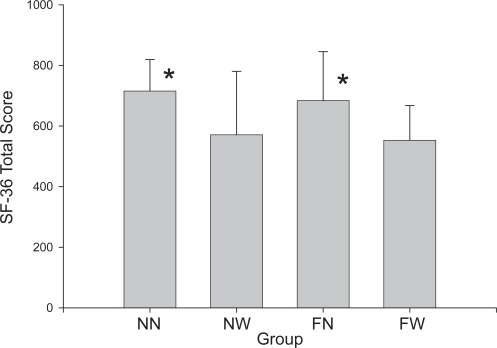
Note: *Significant difference between NN and NW or FN and FW groups, p < 0.05.
Abbreviations: FN, faller–no walker; FW, faller–walker; NN, nonfaller–no walker; NW, nonfaller–walker.


Figure 6 Data for the four comparison groups on the total SF-36 score.
Abbreviations: FN, faller–no walker; FW, faller–walker; NN, nonfaller–no walker; NW, nonfaller–walker.

